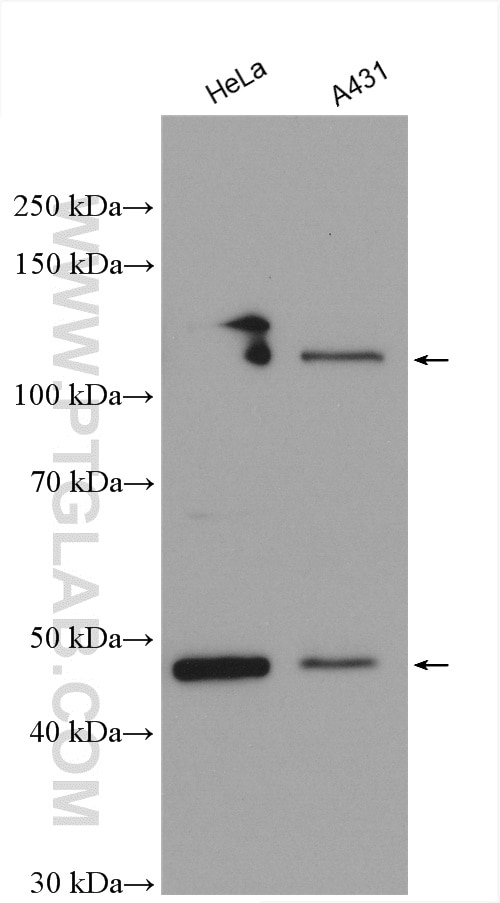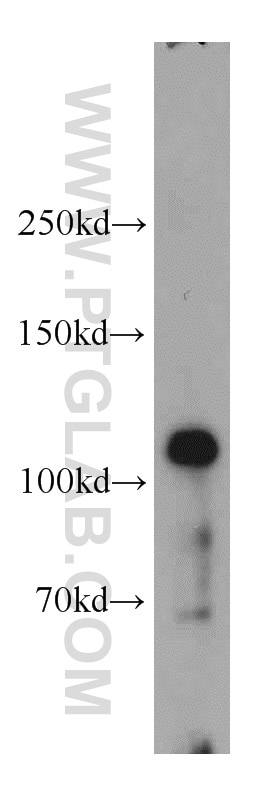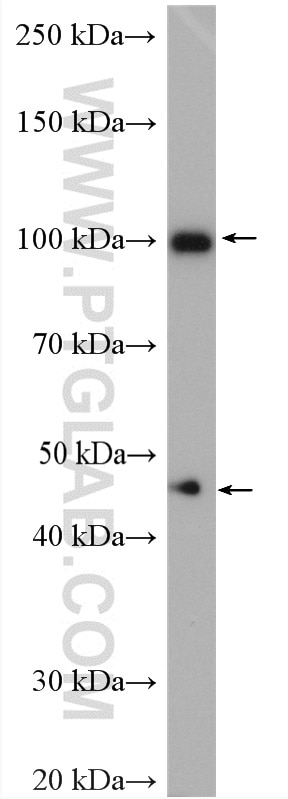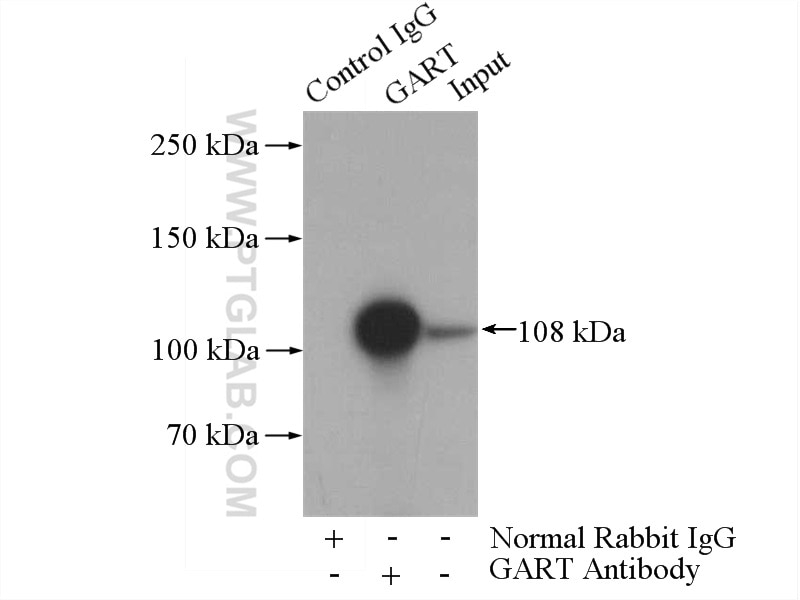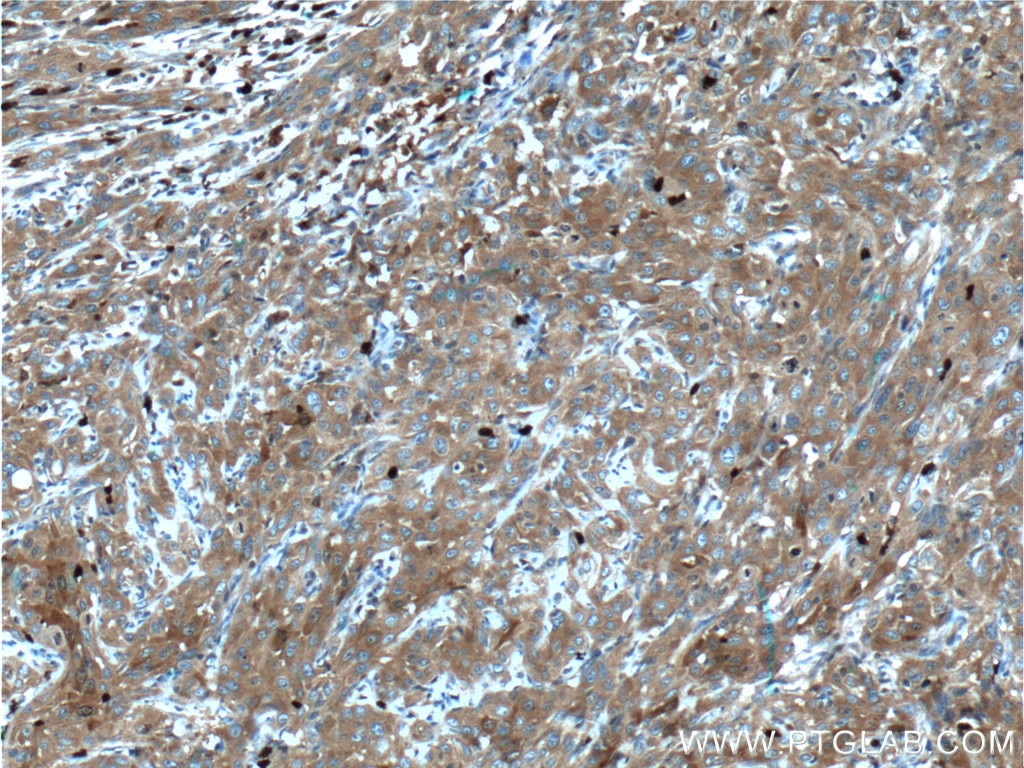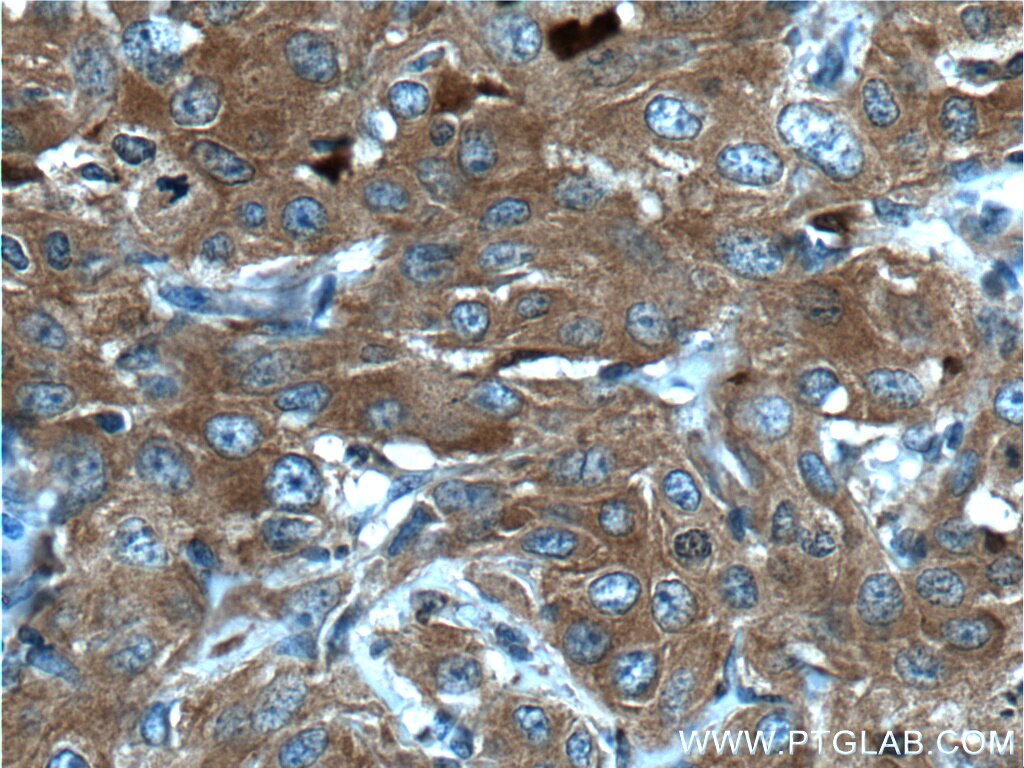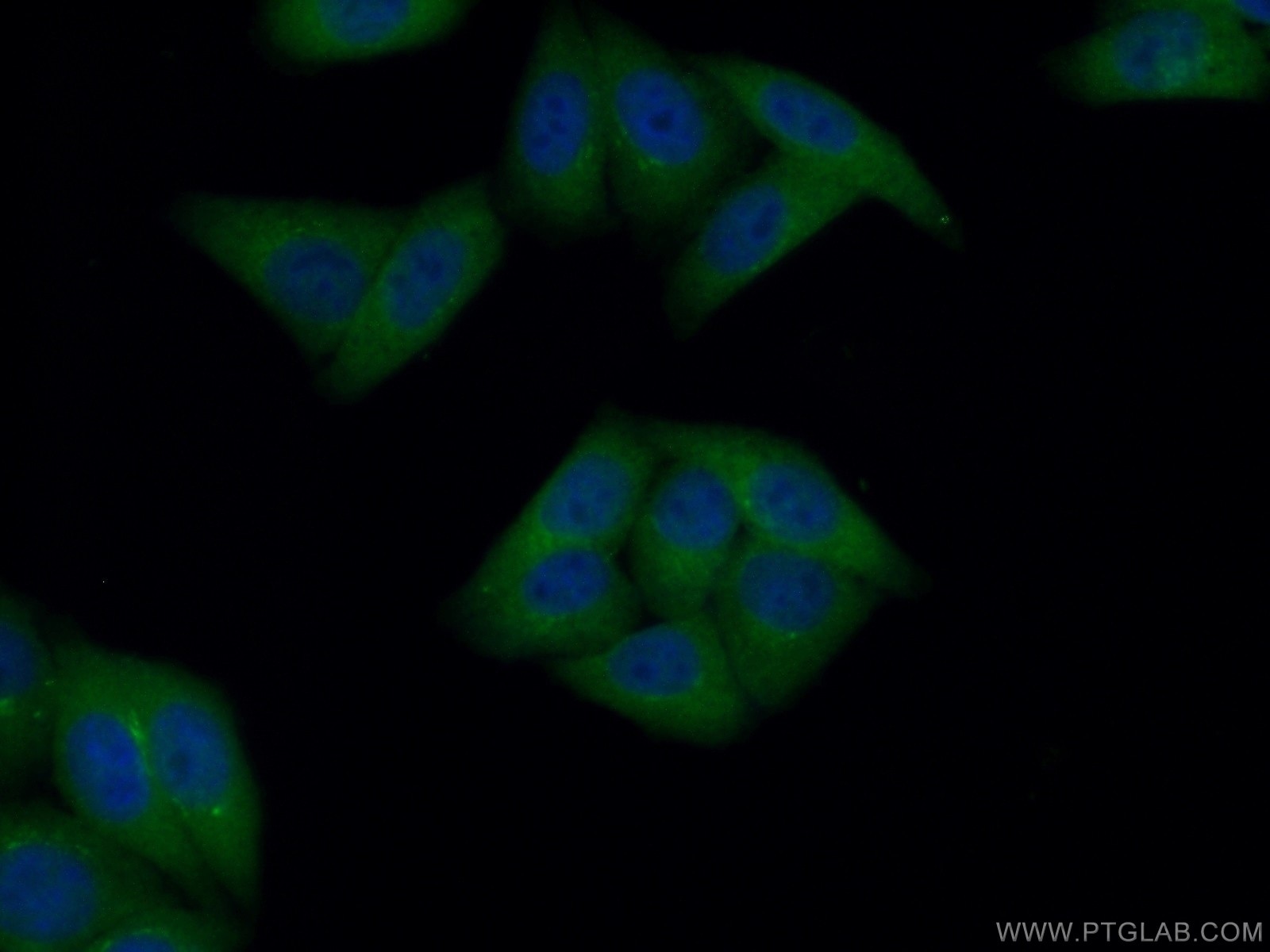- Phare
- Validé par KD/KO
Anticorps Polyclonal de lapin anti-GART
GART Polyclonal Antibody for WB, IP, IF, IHC, ELISA
Hôte / Isotype
Lapin / IgG
Réactivité testée
Humain et plus (1)
Applications
WB, IHC, IF/ICC, IP, CoIP, ELISA
Conjugaison
Non conjugué
N° de cat : 13659-1-AP
Synonymes
Galerie de données de validation
Applications testées
| Résultats positifs en WB | cellules A431, cellules HeLa, cellules HepG2 |
| Résultats positifs en IP | cellules HepG2 |
| Résultats positifs en IHC | tissu de cancer du col de l'utérus humain, il est suggéré de démasquer l'antigène avec un tampon de TE buffer pH 9.0; (*) À défaut, 'le démasquage de l'antigène peut être 'effectué avec un tampon citrate pH 6,0. |
| Résultats positifs en IF/ICC | cellules HepG2 |
Dilution recommandée
| Application | Dilution |
|---|---|
| Western Blot (WB) | WB : 1:1000-1:4000 |
| Immunoprécipitation (IP) | IP : 0.5-4.0 ug for 1.0-3.0 mg of total protein lysate |
| Immunohistochimie (IHC) | IHC : 1:50-1:500 |
| Immunofluorescence (IF)/ICC | IF/ICC : 1:20-1:200 |
| It is recommended that this reagent should be titrated in each testing system to obtain optimal results. | |
| Sample-dependent, check data in validation data gallery | |
Applications publiées
| KD/KO | See 1 publications below |
| WB | See 6 publications below |
| IHC | See 1 publications below |
| CoIP | See 1 publications below |
Informations sur le produit
13659-1-AP cible GART dans les applications de WB, IHC, IF/ICC, IP, CoIP, ELISA et montre une réactivité avec des échantillons Humain
| Réactivité | Humain |
| Réactivité citée | Humain, souris |
| Hôte / Isotype | Lapin / IgG |
| Clonalité | Polyclonal |
| Type | Anticorps |
| Immunogène | GART Protéine recombinante Ag4555 |
| Nom complet | phosphoribosylglycinamide formyltransferase, phosphoribosylglycinamide synthetase, phosphoribosylaminoimidazole synthetase |
| Masse moléculaire calculée | 1010 aa, 108 kDa |
| Poids moléculaire observé | 108 kDa, 46 kDa |
| Numéro d’acquisition GenBank | BC038958 |
| Symbole du gène | GART |
| Identification du gène (NCBI) | 2618 |
| Conjugaison | Non conjugué |
| Forme | Liquide |
| Méthode de purification | Purification par affinité contre l'antigène |
| Tampon de stockage | PBS avec azoture de sodium à 0,02 % et glycérol à 50 % pH 7,3 |
| Conditions de stockage | Stocker à -20°C. Stable pendant un an après l'expédition. L'aliquotage n'est pas nécessaire pour le stockage à -20oC Les 20ul contiennent 0,1% de BSA. |
Informations générales
GART is a trifunctional polypeptide which has phosphoribosylglycinamide formyltransferase, phosphoribosylglycinamide synthetase, phosphoribosylaminoimidazole synthetase activity that is required for de novo purine biosynthesis. GART has 2 isoforms with molecular mass of 108 kDa and 46 kDa due to alternative splicing.
Protocole
| Product Specific Protocols | |
|---|---|
| WB protocol for GART antibody 13659-1-AP | Download protocol |
| IHC protocol for GART antibody 13659-1-AP | Download protocol |
| IF protocol for GART antibody 13659-1-AP | Download protocol |
| IP protocol for GART antibody 13659-1-AP | Download protocol |
| Standard Protocols | |
|---|---|
| Click here to view our Standard Protocols |
Publications
| Species | Application | Title |
|---|---|---|
Science mTORC1 induces purine synthesis through control of the mitochondrial tetrahydrofolate cycle. | ||
Mol Cell ERK2 Phosphorylates PFAS to Mediate Posttranslational Control of De Novo Purine Synthesis. | ||
Nat Commun Purine nucleotide depletion prompts cell migration by stimulating the serine synthesis pathway. | ||
EMBO J UHMK1 promotes gastric cancer progression through reprogramming nucleotide metabolism. | ||
Cell Rep Purine Nucleotide Availability Regulates mTORC1 Activity through the Rheb GTPase. | ||
Avis
The reviews below have been submitted by verified Proteintech customers who received an incentive forproviding their feedback.
FH Hua (Verified Customer) (08-26-2019) | Works well.
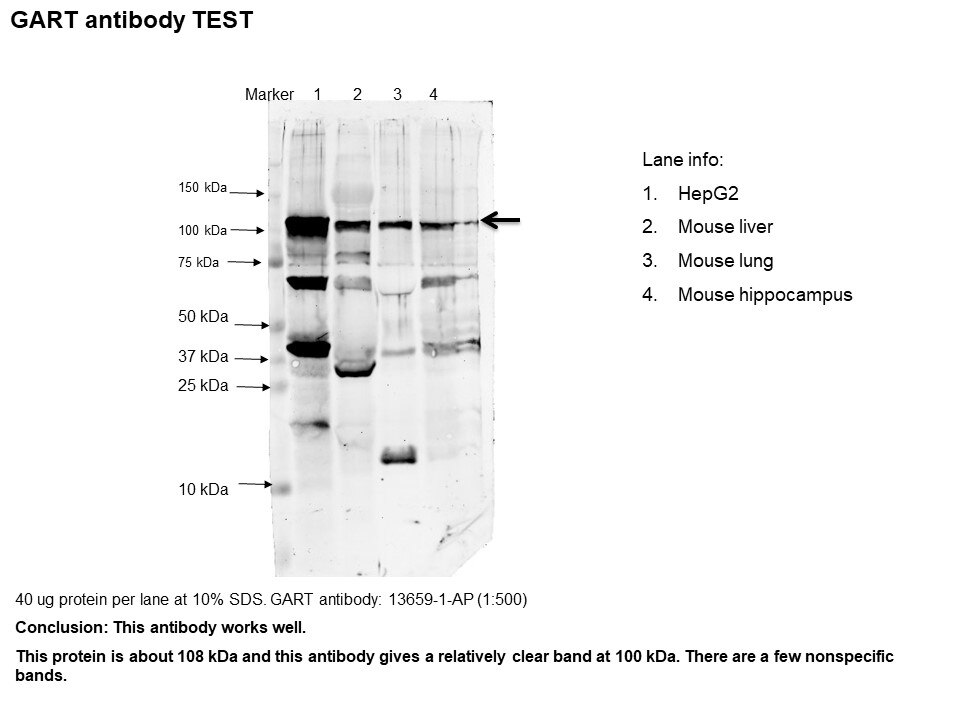 |
